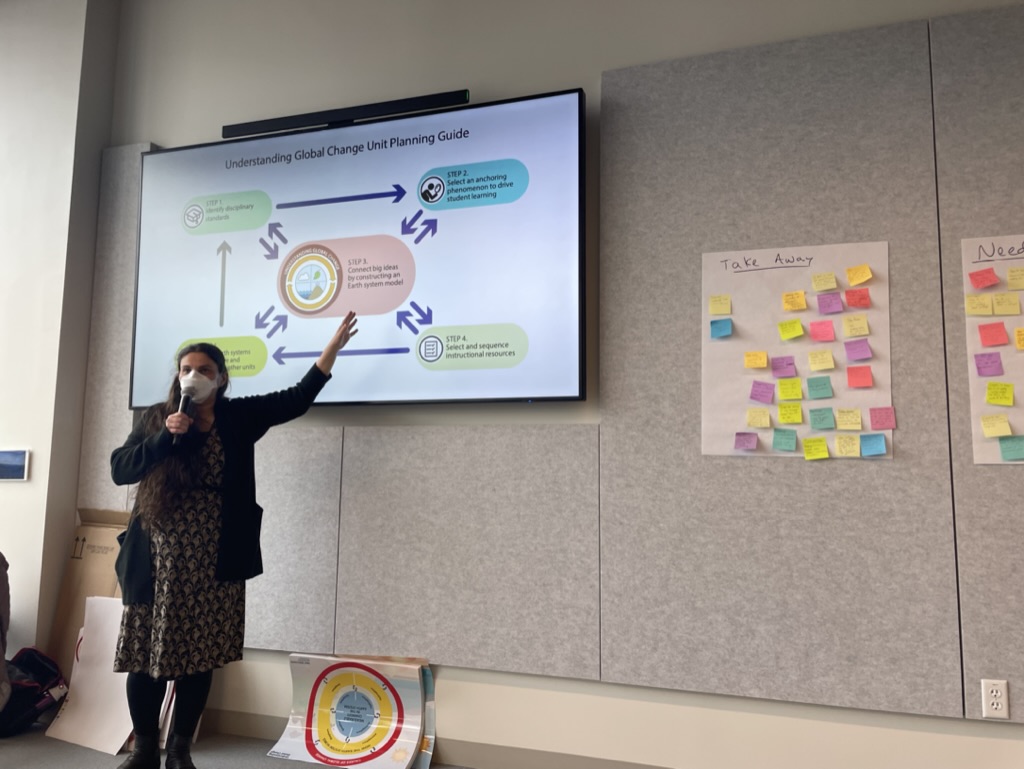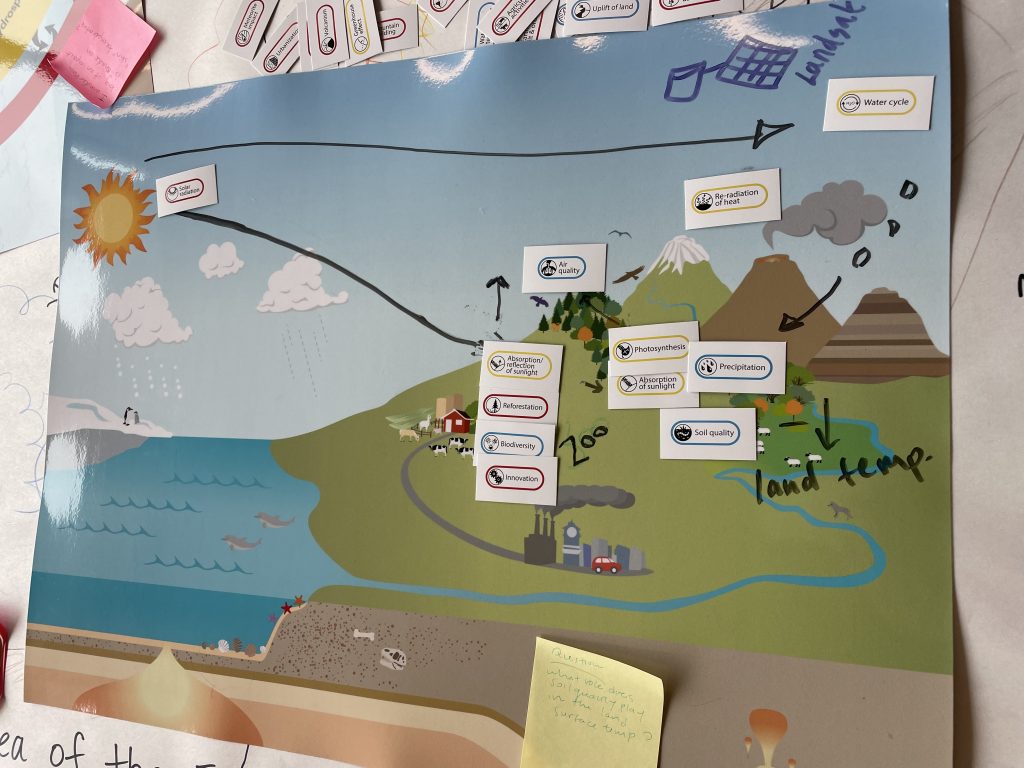Bringing Climate Education to Life: The Power of the Understanding Global Change Framework


What happens when a group of passionate educators, university partners, informal educators, and scientific researchers get together? They create meaningful projects and connections by bringing climate change education to life for their students.
At the Climate Champions Design Summit, a group of dedicated K-12 educators, university partners, informal educators, and scientific researchers, engaged in phenomena using the Understanding Global Change Framework (UGC). Developed by Jessica Bean, Ph.D, from UC Berkeley, this framework seeks to end one-and-done lessons about climate change. The framework expands the possibilities of climate education by using phenomena to help students understand: Causes of Global Change, How Earth Systems Work, and Measurable Changes in the Earth System.
About the UGC Framework
I love how the UGC can guide students to navigate the complexities of human and non-human causes of climate change. It is also a helpful tool for educators in planning instructional units. By charting standards across a year, educators can see how each unit may touch upon different parts of the framework. By the end of the year, students will have a better grasp of how aspects of Earth’s systems interact in the hydrosphere, biosphere, geosphere, and atmosphere. They will also grasp what drives the causes of global change that we are experiencing every day.

This framework can also be used in the elementary space and then extend its use across middle and high school. By the end of high school, students will be very well-versed in their understanding of climate change and be able to explain it using modeling, data, and argumentation.
Building Student Agency through UGC
In addition, the UGC can expand a student’s sense of the world of science which could lead them toward possible career paths. Social and environmental justice is a natural lens to view the world as students engage in the UGC framework through relevant phenomena. The ultimate goal is that students will have the agency to identify solutions and use their creativity to innovate for the good of our planet.
Why Climate Change Education?
As we face more of the effects of climate change, from extreme weather events, loss of habitat and biodiversity, and rising sea levels, we must work together to help students make sense of the global systems and causes at play. This focus on climate education will help students navigate these events and create more empowered learners who can make a difference.

Overall, the UGC framework is a powerful tool for discourse and systems thinking that can help students understand the complexities of climate change. It provides a roadmap for educators to design meaningful projects and make connections across content to bring climate change to life for their students. I’m hopeful that students and educators can be the climate champions we need for the challenges we face.